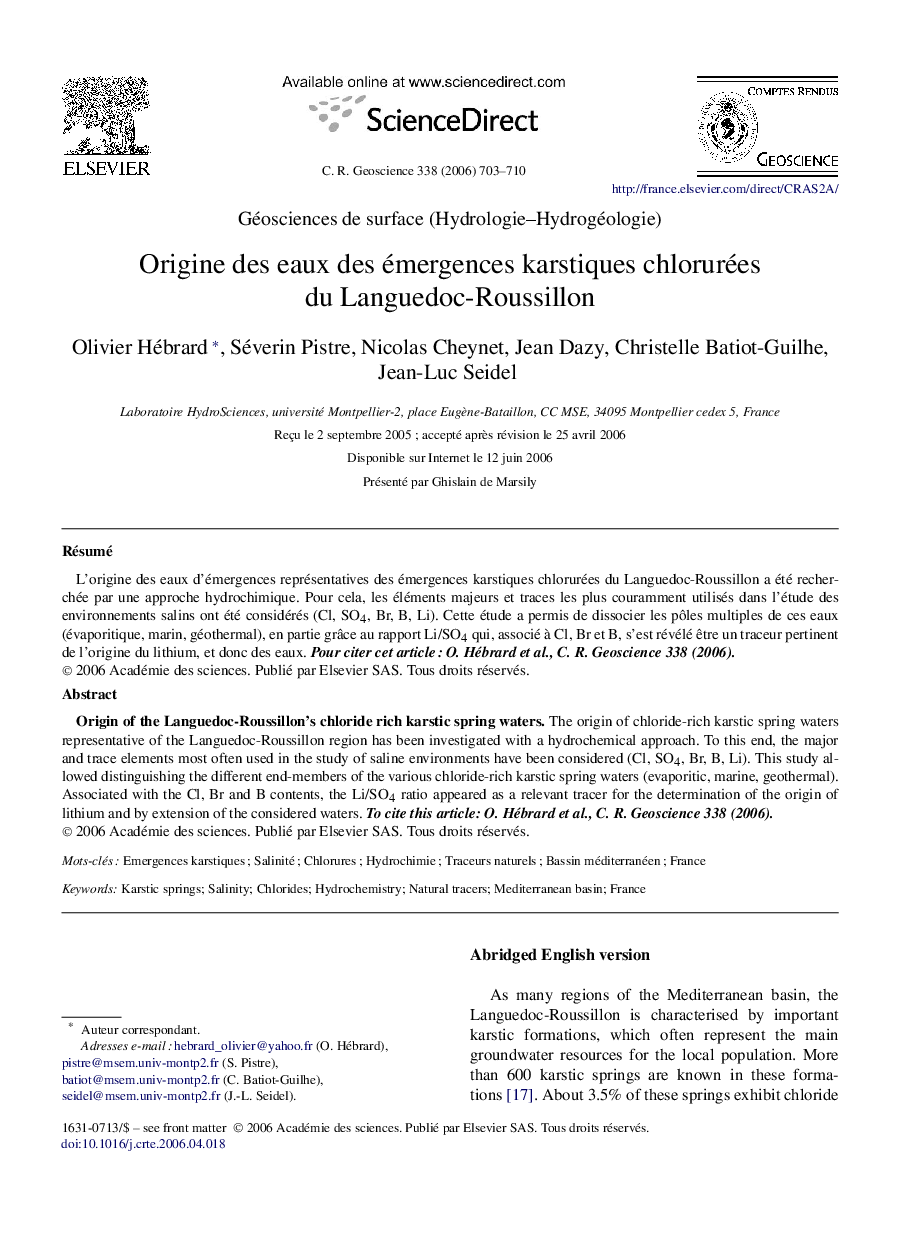| Article ID | Journal | Published Year | Pages | File Type |
|---|---|---|---|---|
| 4463197 | Comptes Rendus Geoscience | 2006 | 8 Pages |
RésuméL'origine des eaux d'émergences représentatives des émergences karstiques chlorurées du Languedoc-Roussillon a été recherchée par une approche hydrochimique. Pour cela, les éléments majeurs et traces les plus couramment utilisés dans l'étude des environnements salins ont été considérés (Cl, SO4, Br, B, Li). Cette étude a permis de dissocier les pôles multiples de ces eaux (évaporitique, marin, géothermal), en partie grâce au rapport Li/SO4 qui, associé à Cl, Br et B, s'est révélé être un traceur pertinent de l'origine du lithium, et donc des eaux. Pour citer cet article : O. Hébrard et al., C. R. Geoscience 338 (2006).
The origin of chloride-rich karstic spring waters representative of the Languedoc-Roussillon region has been investigated with a hydrochemical approach. To this end, the major and trace elements most often used in the study of saline environments have been considered (Cl, SO4, Br, B, Li). This study allowed distinguishing the different end-members of the various chloride-rich karstic spring waters (evaporitic, marine, geothermal). Associated with the Cl, Br and B contents, the Li/SO4 ratio appeared as a relevant tracer for the determination of the origin of lithium and by extension of the considered waters. To cite this article: O. Hébrard et al., C. R. Geoscience 338 (2006).
